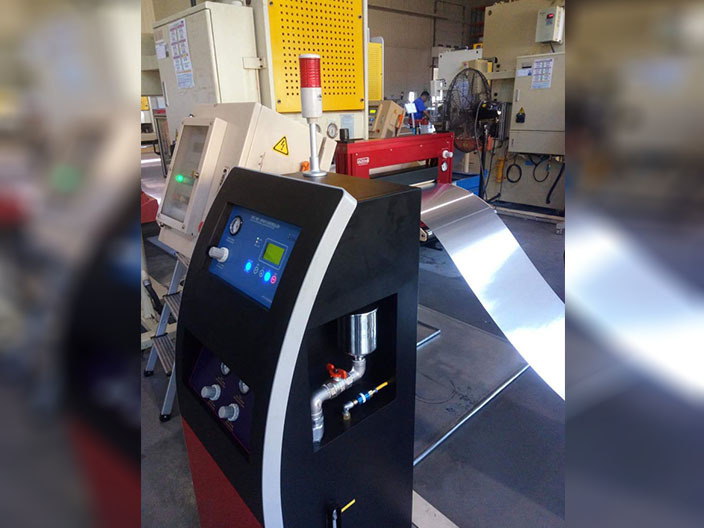News Center
An Oiling System Manufacturer Integrating Design, Production And Sales, With Its Own Brand TRIBOS, Has Been Committed To The Development And Production Of Precision Automatic Oiling Devices For Stamping Processing For Many Years
Features of Aluminum Foil Coating
Release time:
2020-12-13 12:04
Source:
Aluminum foil oiling can be divided into sheet aluminum foil according to its shape. Most of the raw materials for the deep processing of aluminum foil are supplied in roll form. Only a few manual packaging occasions use aluminum foil. Aluminum foil coating oil can be divided into hard foil and soft foil according to its status. Aluminum foil oiled hard foil: Rolled aluminum foil without softening treatment (annealing) and degreasing treatment has a residual surface. Therefore, hard foils must be degreased before printing, laminating and coating. If used for forming, it can be used directly. Semi-rigid foil: Aluminum foil between rigid and soft foil, usually used for forming.
Aluminum foil oiled soft foil: Aluminum foil that becomes soft after being completely annealed after rolling. The material is soft and has no oil residue on the surface. Most applications, such as packaging, use soft pendulum. Aluminum foil oiling Depending on the surface condition, aluminum foil oiling can be classified as single-sided or double-sided. Single-sided polished aluminum foil: After rolling, the foil is shiny on one side and black on the other.

This type of aluminum foil is called single-sided smooth aluminum foil. The thickness of single-sided smooth aluminum foil is usually less than 0.025mm. double-sided polished aluminum foil: single-sided rolled aluminum foil with both sides in contact with the rolled bar. Due to the different surface roughness of the rolled bar, the two sides of aluminum foil are divided into mirror double-sided aluminum foil and ordinary double-sided polished aluminum foil.
Aluminum foil coating According to the processing conditions, aluminum foil coating can be divided into plain foil, coated foil, colored foil and printed foil. Flat foil: Rolled aluminum foil without any other processing, also called smooth foil. Laminated foil: Laminated foil consisting of aluminum foil, paper, plastic film and cardboard. Coated foil: Aluminum foil coated with various resins or paints.
Oiled aluminum foil colored aluminum foil: Aluminum foil coated with a single color. Printed aluminum foil: Aluminum foil with various patterns, designs, words or pictures formed on the surface by printing methods. It can be of one color and up to 12 colors. Soft aluminum foil can be further pressed into 40 foil for high-grade decoration.
Aluminum foil is oiled for a clean, sanitary and shiny appearance. Comprehensive packaging materials can be made from a variety of packaging materials, and the surface printing effect of aluminum foil is better than other materials. In addition, aluminum foil has the following characteristics: The surface of aluminum foil is extremely clean and hygienic, and the surface cannot harbor bacteria and microorganisms. Aluminum foil is a non-toxic packaging material, which is not harmful to human health.
Aluminum foil coated with oil will not cause odor to packaged food. If aluminum itself is not volatile, it and the packaged food will never dry out or shrink. Whether at high or low temperatures, aluminum foil will not bleed. Aluminum foil is an opaque packaging material, so it is a good packaging material.
Aluminum foil coated with oil can be used to package various shapes of products. It can also be made into containers of various shapes. Aluminum foil has high hardness and tensile strength, but has little tear strength and tears easily. The foil itself cannot be sealed by heating, so it must be coated with a hot material such as polyethylene.
Previous page
Next page

